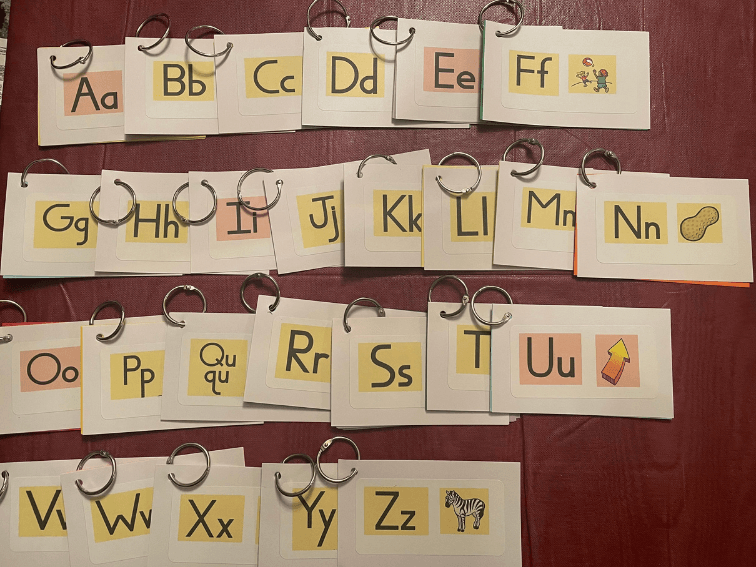contributed by Samantha Saumell, I Have, Not I Am
All teachers want to help students become successful readers and writers.
Whether students like reading or writing, they are readers and writers, whether they know it or not. Students sometimes think that they only ‘write’ in school. But the truth is they write every time they text a friend, write a list, write a card, or even message a friend on a video game. Students don’t just ‘read’ at school; they constantly read everything around them. As teachers, it is our job to help students become successful at spelling.
Word Walls
Everybody has a different classroom setup, but it is essential to have a place where students can become active learners and look for words they need help spelling. A word wall becomes a great resource when students are writing and come across a word that they can’t phonetically sound out.
A word wall is a space that contains high-frequency words. Studies have shown that students who receive direct sight word instruction increase their sight word recognition, reading rate, and fluency (Rosier). Students who were exposed to and taught sight words increased their reading because they could spend less time trying to decode ‘trick words’ and more time practicing fluency and comprehension.
Introducing Words
Before adding a word to the wall, teaching the words to students is important. In Phonics They Use {affiliate link], author Patricia Cunningham explains that it is not just enough to have a word wall; instead, teachers must teach into it (as cited in Rosier). Helping students learn these words can increase their reading fluency.
For example, Bourne explains that when introducing a new word it is helpful if you have students use the word in a sentence. Having students use the word helps students to connect meaning to the new word, which in turn helps students retain the word (as cited in Rosier). You can begin by writing the word on the board, then take some time pointing out any phonics skills the word may have. After that, have students echo the word and sky write it. After students sky write the word, have students write it by themselves.
Once students have practice spelling the word then have students use the word in a sentence. This may seem like a lot of steps but this multi-model approach is effective when you have a classroom full of students that all learn differently. By going through these steps you help visual, linguistic and kinesthetic learners.
See also Quotes About Reading
According to Howard Gardner, multiple intelligences explain the way different students learn. The eight intelligences include visual, linguistic, logical-mathematical, body-kinesthetic, musical, interpersonal, intrapersonal, and naturalistic (Cherry). All students learn differently, and with that in mind, information should also be presented in ways that help all students be successful.
Where Do I Put It?
Not all classrooms have a giant space where you can fit letters A-Z. One way to deal with this problem is to create an interactive word wall. A word wall where students become active participants in their learning. As students come across a trick word they will learn to take a few moments to consider what letter the word starts with.
Once they figure out the beginning sound they can go to the place in your classroom where there are rings of words. There can be a ring of words for each letter. Students will then be able to take the word back with them to their seat and learn how to spell it correctly. This is also a great resource for English Language Learners, students currently working hard to learn their letters and corresponding sounds.
This wall is accessible for all students. According to the article, “Word Walls” published by Reading Rockets it can be difficult for English Language Learners to copy words off the board. Being able to physically go and grab the word is a great way to support students learning English.
See also What Is Critical Reading?
Ultimately, teachers want to help all students become successful readers and writers. Implementing a word wall in your classroom is a step in the right direction. Help your students become active participants in their learning. Let’s give all students a chance to be victorious and show them they are successful readers and writers!
Bio
Samantha Saumell is not only a teacher but also a published author. Her book I Have, Not I Am [affiliate link] is available on Amazon. It is an inspirational story about how her life changed when she was diagnosed with anorexia. As people around her began to define her by a disease, she was forced to make a choice.
This book is meant to provide you with a glimmer of hope and a sense of reassurance that you are not alone. Whether you are fighting an eating disorder or you know someone who is, this book offers advice for you every step of the way.
Works Cited
Cherry, Kendra MSEd. “Gardner’s Theory of Multiple Intelligences.” Verywell Mind, Verywell Mind, 11 Mar. 2023, www.verywellmind.com/gardners-theory-of-multiple-intelligences-279516
Rosier, Lauren. “Word Walls and Reading Fluency.” Missouri State University, 1 Jun. 2015, https://www.nwmissouri.edu/library/researchpapers/2015/Rosier,%20Lauren.pdf
Sayre, April Pulley, et al. “Word Walls.” Reading Rockets, www.readingrockets.org/classroom/classroom-strategies/word-walls.
TeachThought Staff 2024-08-27 21:33:39
Source link

